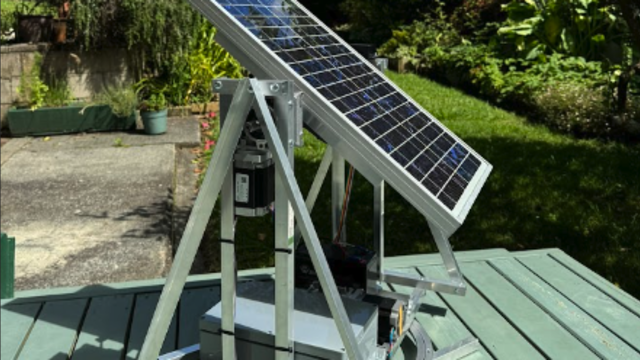Alongside the RedBoard, there’s enough bits and pieces to complete a range of projects. It’s clear that quite a bit of thought has gone into the balance of this kit. There are bits to display information (LEDs, LCD display), bits to get data (ultrasonic sensor, potentiometer, and temperature sensor), bits to make things move (motors and a servo), and associated bits (resistors and motor drivers).
Along with the electronics bits, there’s a breadboard which allows you to assemble circuits without having to solder them together and, once you’re finished, everything comes apart and you can reuse the bits in your next circuit. Together, there’s almost everything you need to make the projects in the guide (you’ll also need scissors, pliers, four AA batteries, and a paper clip).

It’s the guide-book that really sets the SparkFun Inventor’s Kit above the many other electronic component kits that we’ve seen. It includes a basic setup guide and then five projects, each of which includes three or four circuits as well as suggestions for different ways you could modify the build to take it in different directions. The guide is available online at hsmag.cc/NyzLmA.
The projects start with the classic blinking LED and build up to a wheeled robot that navigates the world by itself. If you complete these and are still looking for more, there are also some additional resources at hsmag.cc/uMJoEj.
The guide is well laid out and easy to follow. It includes explanations of the different concepts and components that you’re using, so it’s not just a list of steps that you complete in turn. There’s also trouble-shooting advice for when things don’t work, and suggestions for extending each project.
We would have liked to have seen a little more coverage of the programming side of things in the guide. The code for all the projects is downloadable and, while the electronics side of things is well explained, the guide goes into less detail about how to program. It does explain the key concepts, and important bits of code, but a little more detail on how to create programs would – in our view – help readers with no background in coding.
Perhaps we’re being a little pedantic here because it is a beginner’s kit, and as such it can’t cover everything. What it does cover, it covers well and interested users could, no doubt, find more information about Arduino programming that they can use alongside their Inventor’s Kit.
While all the components are straightforward to use, there’s nothing specifically ‘beginner’ about them. They’re the same components that are used by experienced makers, and assembled in the same way that most people prototype their projects (on a breadboard).
Because there’s no proprietary gubbins or secret sauce in this kit, there’s not really a point where you outgrow it. You’ll probably find that you want to add more bits to it, but there’s a wide range of breadboard-compatible components available from just about every hobbyist electronics store on the planet that will work seamlessly with the bits in this kit (the only caveat is that they need to be 5 V-tolerant to work with the RedBoard (or an Uno) – parts designed for a 3.3 V board like a Raspberry Pi may not work successfully.
If you decide that you want to try out a different controller to the RedBoard, you can work with anything else that will connect to the breadboard (which is most things). In this way, the SIK isn’t so much a beginner’s kit, as the start of your collection of electronics bits and pieces.
We feel it’s only fair to warn anyone reading, and looking to get started in electronics, that these collections have a habit of growing at a faster rate than the available space. It starts with a nice neat collection in a tidy plastic box and soon you’ll be wondering if you need to build a new shed.
SparkFun claims that the SIK is suitable for anyone aged ten or older. Obviously everyone’s different, but broadly this seems about right to us. It’s a bit fiddly and doesn’t obfuscate the details, so many children younger than this may struggle. However, there’s nothing particularly childish about it and it could equally be interesting for people well beyond this age looking to get started with electronics.
There isn’t a killer feature of the SparkFun Inventor’s Kit, but it is well thought out, comes with a great guide, and is easily expandable as your experience and knowledge grows.
sparkfun.com $99.95
Verdict
A well-thought-out kit for anyone getting started with electronics.







